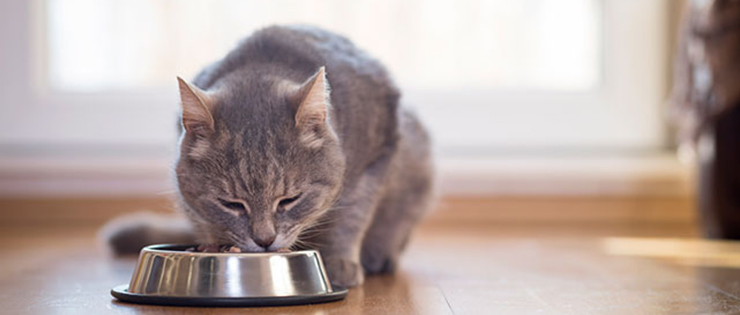
When I worked at the Zoo, we used to have starve days for many of the big cats. This included the lions and tigers, who each week would go without food for one entire day. This was designed to manage the body weight of our cats, but also to emulate the reality of what naturally occurs in the wild. Wild carnivores usually do not have the luxury of assured daily meals, and their metabolism has adapted to this. Whilst there is physiologically very little difference between your beloved cat and a wild lion, your cat has likely become accustomed to a domestic lifestyle, where their prepared daily food intake is delivered at a timely fashion a couple of times a day. If your cat is anything like mine, their incessant meowing at morning and night indicates that the routine of meals is very important. But is this necessarily what is best for them? Are we over-feeding our cats?
Around 35-50% of cats in Australia are heavier than they should be. Due to their small stature, this means that it doesn’t take much for a cat to become overweight. If your cat is around 15% heavier than their optimal body weight, they are considered obese. We all know that the obesity epidemic for people in Australia is one of the most common causes for early death as well as chronic and debilitating diseases. The same applies to our pets. So, if we want our cats to live long and healthy lives, we need to stop giving in to those manipulating meows and expressions of hunger. I know it’s hard, but it is worth it.
There can be no doubt that the most common cause of obesity is expelling less energy than your cat intakes. In other words, your cat is eating more than they are working off. Because cats can sleep up to 22 hours a day, there is very little that they are doing to burn off their food, so lower energy foods are more appropriate for cats, compared with dogs. Having said that, cats still require daily exercise. This does not mean letting them outside to roam the streets at night (your cat should always be indoors at night-time). It means there are many things you can train your cat to do, to get their body moving and their fat burning.
Some great activities your cat may love
- Believe it or not but there are apps on your device that you can download, for your cat! From moving mice to virtual gold fish bowls, there are some cats that love swiping with their paws almost as fast as you might swipe left on your tinder app.
- Laser pointers can be great to entice your cat to move about and express their predatory prowess.
- Work on making a great cat tower. If you are handy, these can be made at little expense and enable your cat to climb, scratch and stretch about. If you’re not so handy, they can be bought at pet warehouses or online.
- Make a cat wand. You can easily do this and get quite creative with what you attach at the end. Cats love to chase, leap and grab on to these, and you can use them as lures to get your cat more active.
Ideal shape
From kittenhood to maturity, most cats do well with two meals per day. This can reduce to once a day upon adulthood, but the best way to decide on how often to feed them depends on their activity level and their current body weight. Your cat’s shape will tell you a lot about how often to feed them and whether what you are providing them with is too high or too low in energy. There are some great cat charts that you can use, similar to those for dogs. The shape of your cat’s abdomen looking down, can be a basic and accurate indicator of your cat’s health. Just like dogs, a cat’s rib cage should appear wider than their belly when looking down over them. You should not be able to see their bones, but fat should not be covering this either. Rather, muscle and some subcutaneous fat is ideal.
Your cat is a part of your family and they depend on you to keep them happy and healthy. Optimal body weight is an essential aspect of health, so get your cat wand ready and see some weight loss magic appear right before your eyes. Good luck.